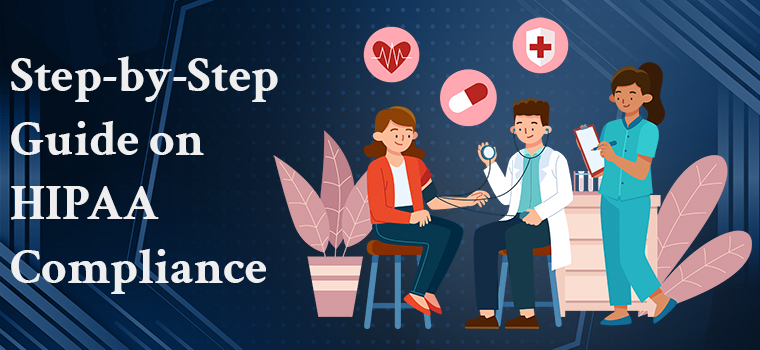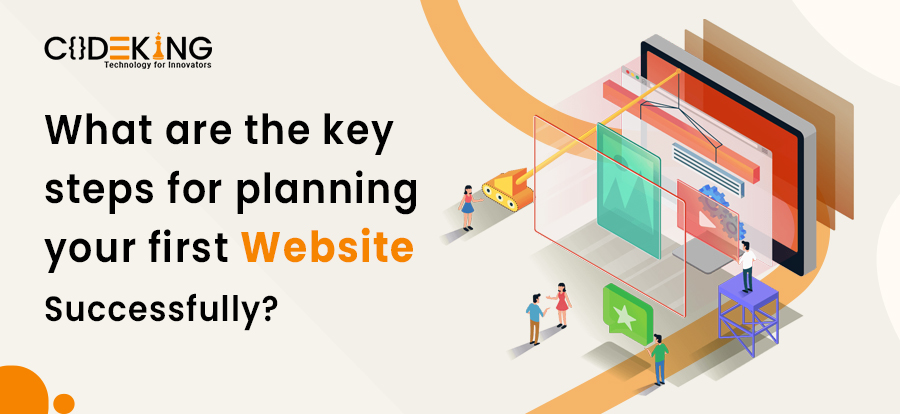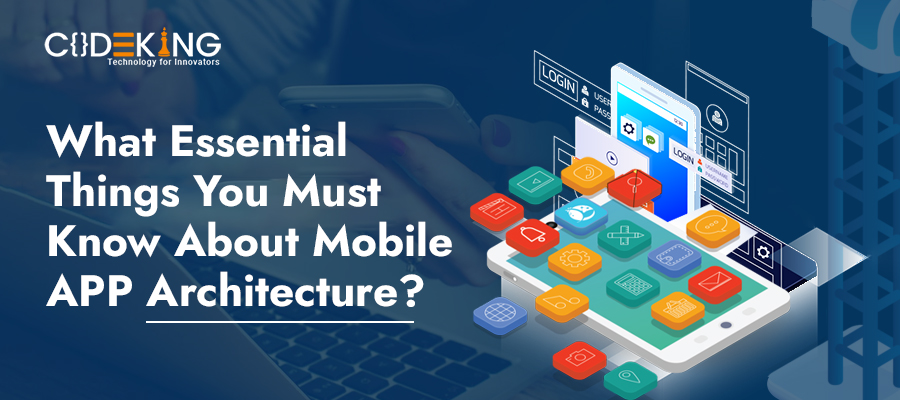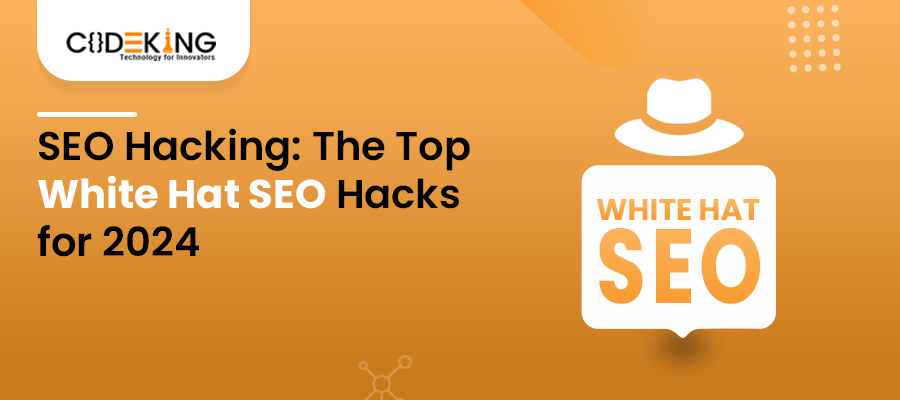What is HIPAA?
HIPAA is described as Health Insurance Portability & Accountability Act. It was designed in the year 1996 to regulate the safety of patient data, decrease the cost of healthcare, and offer continuous health insurance treatment for those who lose jobs. But, the part of the actors interested in as developers of a healthcare software product is its necessity for protection against data fraud. We are helping you by providing step by step guide on HIPAA compliance.
Why is HIPAA compliance very significant?
For the patients
First, HIPAA protects the patients and their information. Personal data and remote medical information can be used by troublemakers against patients. Occasionally this means trouble, but usually, the costs are much more serious. HIPAA defends patients from identity stealing, a general crime linked to individual data fraud. This is particularly true in the United States, where social security numbers are very important and are related to almost all individual data of an individual. HIPAA protects the patients from individuality theft, which is a popular crime related to personal data fraud. For any person, individuality theft can affect large debts, huge financial losses, and injurious fake claims. So HIPAA is necessary to protect the information of patients.
Which medical apps are essential to comply with HIPAA instructions?
Whether an app will be controlled by HIPAA is dependent upon the following aspects:
- PHI – Data covered by the app
- Objects using the app – Covered Entities and Business Associates.
PHI
- This is individually identifiable health data
- It is created, composed, stored, or transmitted by an enclosed entity or business associate
- in any form, counting electronic, or oral.
Steps to apply HIPAA to your app
Compliance with HIPAA is a costly affair for most health app makers. Confidently, there exist numerous services like HIPAA-compliant app builder that can make HIPAA-compliant apps within minutes. But it is essential to know your way, as it guarantees complete HIPAA compliance for software development. To meet HIPAA fundamentals, you have to take all important authoritative, and specialized measures to guarantee individual clinical data such as protection, dependability, and security of automatically communicated PHI. Administrative protections refer to control and training, safeguards refer to servers, PCs, data centers, laptops, etc., and technical procedures involve the health data.
Push announcements
Additionally, the procedure of building a HIPAA-compliant app assumes IT risk analysis. But there is no complete information about it in HIPAA Security Rule. But, several documents help comprehend HIPAA requirements better and guarantee sufficient risk assessment measures.
Steps for ensuring HIPAA compliance
Get Access switch
A HIPAA-compliant app that preserves PHI should impose limits on who can see confidential information. As designated by HIPAA Privacy Rules, no one should get more patient health information than essential to carry out their accountability.
Secure Personal authentication
The next thing to do is to know who is accessing PHI. The law offers the subsequent authentication methods for HIPAA compliant:
- Biometrics
- Passwords
- Physical method for individual proof
- PIN
Guarantee Transmission security
Transmission security promises that PHI being conveyed over the app network is encoded during transmission. The HTTPS protocol encrypts information with SSL. With the help of an exclusive algorithm, it alters personal health information into a sequence of characters without decryption keys. Try to use it for all your communications, or for the signup screens, and authorization cookies.
Use correct PHI disposal
Among other HIPAA necessities are PHI disposal. Disposal assumes destroying PHI when it is not needed. Make sure that there are no copies in backups; else, the information cannot be measured or disposed of. Hence, preventive measures must avoid prohibited uses and revelations of PHI, including in assembly with the disposal of information.
Guarantee Data backup and storing
No matter how consistent the HIPAA app system is, there is no complete protection. Also, only an apt backup can help to avoid most problems related to data loss. Data backup states to create a full copy of data on another medium. Preferably, the backup should be situated on a server, which is positioned in another data center. This is the individual way to promise maximum data security.
Assess Audit controls
An IT audit is an indispensable step to HIPAA compliance development. The nonappearance of audit controls in an application could give higher fines. It would be finest if you separated what is done to PHI stored in the app. Record each time when a client signs all over your framework. You should be alert of operations done with all information within HIPAA apps. Checking is thinkable through programming or procedural methods. A frank option would be to use a table in a log file to record all the connections with patient information.
Applying Encryption
Encryption is the best way to guard information against intruders. It allows transmission of the data over a network without any risks and promises data integrity. Encryption is crucial in the digital world, including HIPAA necessities for mobile devices and HIPAA for web applications. All prevailing encryption methods are grounded on cryptography. The modern methods are not character conversion and they are used not only in individual correspondence. Without encryption, the data stored on a HIPAA-compliant app can simply be read by hackers.
How to create HIPAA Compliant Mobile Apps?
Evolving HIPAA-compliant apps can pose a challenge for the app developers particularly because it asks for several modifications on the features and design front. Making a HIPAA compliant app calls for the following rules:
- Privacy
- Safety
- Enforcement
- Breaching
The physical and technical safeguards are essential while creating the app.
Physical safeguards
It includes a guard of the backend, the network for information transfer, and devices that are on Android ensuring that they cannot be negotiated, or stolen. To ensure app security, you must apply authentication while making it dreadful to access apps without verification.
Technical safeguards
They focus on encrypting the data which can be moved on servers. Some of the technical safeguards include:
- Extra access process
- Exclusive user identification
- Automatic logging off
Another practice in this regard can be by following the least necessary requirements. Do not collect data that you need nor store data for longer than needed for work. Moreover, avoid the spread of PHI data in push warnings or leaking the information in backups.
General Features of a HIPAA Compliant Apps
Like additional mobile app sectors, no healthcare apps are the same. Some features are common in the HIPAA-compliant app development processes.
User Documentation:
For the verification of users, the finest thing to ask them is a PIN or password. You can take the feature up a notch by applying biometric identification.
Contact at time of emergency:
In case of emergencies, network situations and important services might face a disturbance. While it is not a requirement to position for these instances, it would be a decent decision, deliberately to have a provision that reports these issues.
Encryption feature:
The data which is being transmitted has to be encrypted fully. When you use AWS, you mechanically get encryption in place. Although this can be enough, it can be a decent move to fortify it with AES encryption.
Which Apps Should Comply with HIPAA rules?
When we gauge an app against the want to comply with the HIPAA rule, we consider some criteria to define which are HIPAA-compliant applications:
Entity
When an app is utilized by a covered entity like a hospital or a healthcare insurance provider, it will likely comply with the HIPAA software development necessities. If you plan to design an app that facilitates patient and doctor interaction, it would have to fulfill the HIPAA rules because both are protected entities. On the other hand, an app that helps a person in succeeding a medication schedule, will not necessarily have to track the HIPAA privacy rules since there are no entities involved.
According to the Privacy Rule, there are 2 types of organizations that are exposed to HIPAA compliance law:
Business associate:
They are the objects which collect, process and transmit PHI on the behalf of covered entities.
Enclosed entities:
They are the healthcare administrations, providers, etc who perform some financial transactions electronically. Some of the transactions include fund transfer, electronic billing, etc.
Data
Mobile app HIPAA acquiescence is focused on protected health data which can be operated to find an individual with the data that has been created or disclosed in the time when healthcare administrations managed services like the diagnosis offered.
PHI consists of personally identifiable data and medical data. A significant thing here is that only when personally identifiable information is related to the medical data, does the data become PHI. An application that helps physicians in identifying skin diseases by learning the anonymous photos does not cooperate with any PHI. But, when you mention the patient’s address, it would become a PHI. When the information stored in an app can be identifiable, it must comply with HIPAA compliances. The same rule is put on when the confidential data is stored on a third-party server.
The last factor which aids identify whether a healthcare app falls under the HIPAA compliance rules is related to the employed technology and contains multiple standards applied for shield and controlling access to electronically protected health information.
If you’re also want to know about complete guide to travel apps read it by clicking on it now.





